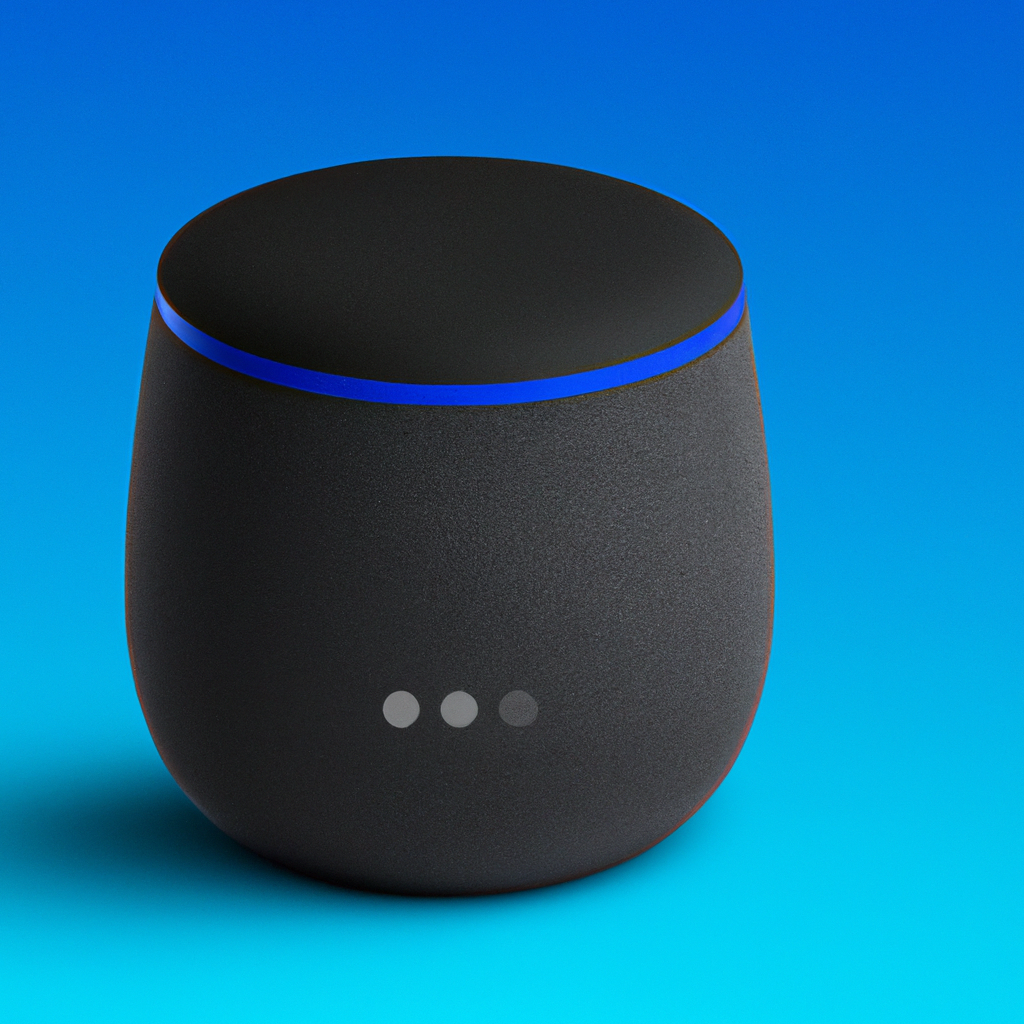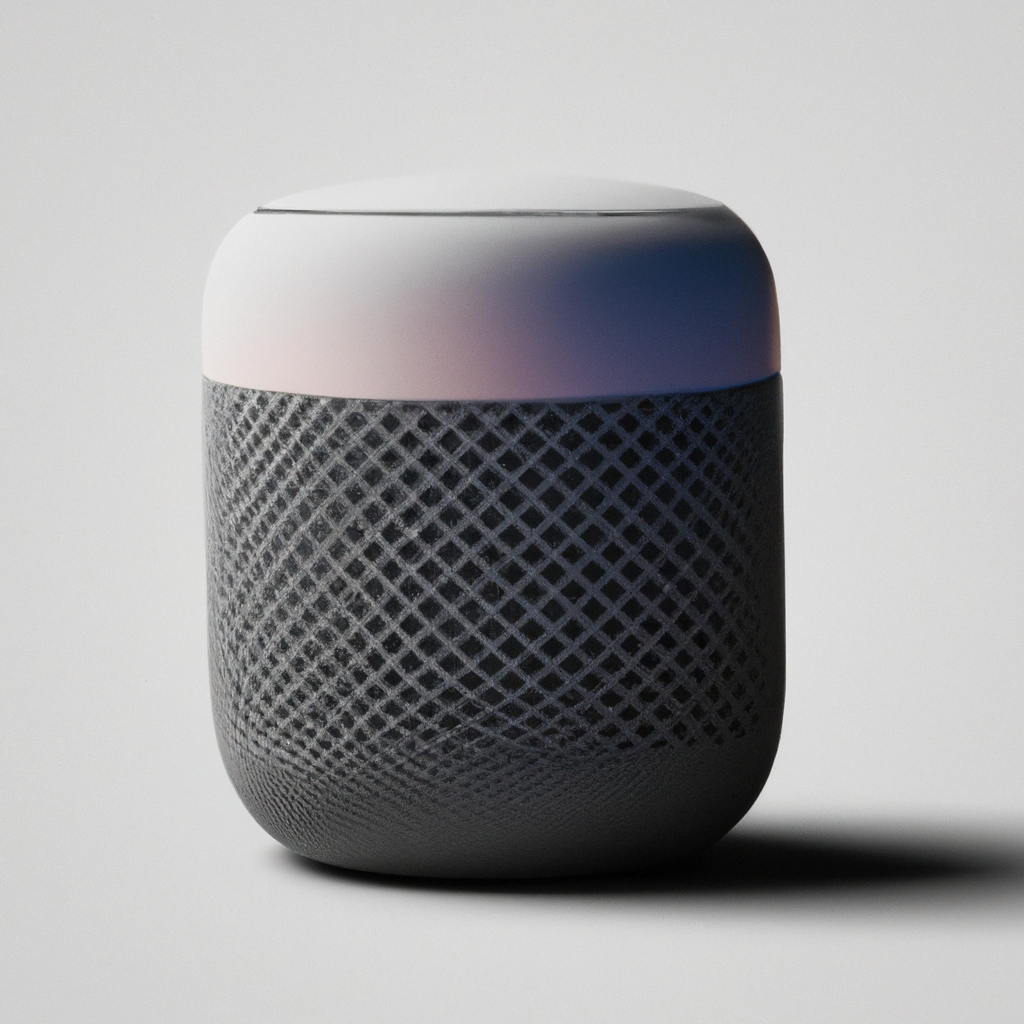Have you ever wondered about the futuristic devices that can do everything from answering your questions to playing your favorite music with just a simple voice command? Well, look no further! In this article, we will introduce you to the world of smart speakers and delve into their incredible functionality. Whether you’re a tech-savvy enthusiast or a newcomer to this cutting-edge technology, this introduction will give you a comprehensive understanding of what smart speakers are and how they work. Get ready to be amazed by the wonders of these intelligent gadgets that can revolutionize your daily life!

What are Smart Speakers
Definition of Smart Speakers
Smart speakers are voice-controlled, wireless devices that use artificial intelligence (AI) and cloud computing technology to perform various tasks. These devices are equipped with built-in virtual assistants that can recognize and respond to voice commands, allowing users to interact with them hands-free. Smart speakers have become increasingly popular in recent years due to their convenience and ability to integrate with other smart home devices.
History of Smart Speakers
The history of smart speakers dates back to 2012 when Amazon introduced the first-generation Amazon Echo. Since then, the market for smart speakers has rapidly expanded, with Google, Apple, Sonos, and Bose joining the competition. These companies have continuously improved their devices, adding new features and capabilities to meet the evolving needs of consumers.
Key Features of Smart Speakers
Smart speakers offer a range of features that make them versatile and useful devices in our daily lives. Some of the key features include:
Voice Activation and Recognition: Smart speakers can recognize multiple users and their voices, allowing for personalized experiences and tailored responses.
Digital Assistants: These devices come equipped with intelligent virtual assistants like Amazon’s Alexa, Google Assistant, Apple’s Siri, and others, which can perform tasks, answer questions, and provide information.
Connectivity and Integration: Smart speakers can connect to other smart home devices like thermostats, lights, and security systems, allowing users to control these devices using voice commands.
Audio Processing: Smart speakers are designed to provide high-quality audio output, making them ideal for music playback, podcasts, audiobooks, and more.
How Smart Speakers Work
Voice Activation and Recognition
Smart speakers use far-field voice recognition technology to listen for specific wake words, such as “Alexa” or “Hey Google.” When the device hears the wake word, it starts recording and processing the subsequent voice command. Advances in machine learning and natural language processing enable the device to understand and interpret these commands accurately.
Digital Assistants
The heart of a smart speaker is its built-in virtual assistant. These assistants, powered by AI algorithms and connected to the internet, can perform a wide range of tasks. They can provide weather updates, set timers and alarms, play music, inform about news and sports, control smart home devices, and even order products online.
Connectivity and Integration
Smart speakers are designed to seamlessly integrate into the broader ecosystem of smart home devices. They connect to the internet via Wi-Fi and can communicate with other devices using various protocols like Bluetooth, Zigbee, or Z-Wave. This connectivity enables users to control their smart home devices through voice commands directed at the smart speaker.
Audio Processing
To ensure an optimal listening experience, smart speakers use advanced audio processing techniques. They often feature multiple built-in speakers or connect to external ones, providing immersive sound quality. Some smart speakers also employ noise cancellation technology to enhance voice recognition and minimize background noise interference.

Popular Smart Speaker Brands
Amazon Echo
Amazon Echo, introduced in 2014, was the first mainstream smart speaker to hit the market. It utilizes Amazon’s Alexa voice assistant and offers a range of models, including the Echo Dot, Echo Show, and Echo Plus. The Echo devices have gained popularity for their vast array of skills and compatibility with a wide range of smart home devices.
Google Home
Google Home, powered by Google Assistant, is a direct competitor to Amazon Echo. Google offers a range of smart speakers, including the Google Home Mini, Google Nest Hub, and Google Home Max, catering to different budgets and audio preferences. Google Assistant’s ability to tap into Google’s vast knowledge graph makes Google Home a valuable information resource.
Apple HomePod
Apple’s entry into the smart speaker market is HomePod, featuring the virtual assistant Siri. The HomePod excels in sound quality and is popular among Apple ecosystem users who prefer seamless integration with their other Apple devices like iPhones and Macs. Siri’s integration with Apple Music further enhances the device’s music playback capabilities.
Sonos One
Sonos One is a versatile smart speaker that supports both Amazon Alexa and Google Assistant. With its sleek design and exceptional audio quality, the Sonos One is often favored by audiophiles. Sonos also offers multi-room audio synchronization, allowing users to connect multiple speakers and play synchronized music across different rooms.
Bose Home Speaker
Bose Home Speaker, powered by both Google Assistant and Amazon Alexa, combines Bose’s renowned audio quality with the convenience of voice control. Bose’s expertise in audio engineering ensures that their smart speakers deliver excellent sound reproduction, making them an excellent choice for anyone seeking superior audio performance.
Functions of Smart Speakers
Media Streaming
Smart speakers allow users to stream various forms of media, including music, podcasts, audiobooks, and radio stations, directly from popular streaming services such as Spotify, Apple Music, or Amazon Music. Users can play, pause, skip, and control the volume using simple voice commands.
Smart Home Control
One of the most significant advantages of smart speakers is their ability to control other smart home devices. Through voice commands, users can adjust thermostats, turn on lights, lock doors, control security cameras, and much more, making their homes more convenient and energy-efficient.
Information and Answering Questions
Smart speakers are excellent resources for general information and answering questions. Users can ask about the weather, news updates, sports scores, and even more specific queries using natural language. The smart speaker’s virtual assistant will provide relevant and accurate answers sourced from the internet.
Personal Assistant
With their AI-powered virtual assistants, smart speakers function as personal assistants. They can create reminders, set timers and alarms, manage calendars, and even make calls on the user’s behalf. Smart speakers can be an invaluable tool in organizing and managing one’s daily tasks and responsibilities.
Voice Calls
Smart speakers with calling capabilities enable users to make hands-free voice calls to their contacts, provided they have set up their contacts in the associated app. Whether it’s calling a friend or dialing a local business, smart speakers streamline the calling process by eliminating the need to use a phone.
Alarm and Timer
Smart speakers excel in serving as alarms and timers. Users can set multiple alarms, customize alarm tones, and even snooze or turn off alarms using voice commands. Similarly, timers can be set while cooking, exercising, or performing any activity that requires a specific duration.
Weather Updates
With a simple voice command, smart speakers can provide accurate and up-to-date weather forecasts for your location or any other location of your choice. This feature is particularly useful for planning outdoor activities or staying informed about the weather conditions throughout the day.
Music Playback
Smart speakers have revolutionized the way we listen to music. With voice commands, users can play their favorite songs, create playlists, control volume levels, and even request specific genres or artists. The integration with popular music streaming services ensures access to an extensive library of music.
Calendar and Reminders
Smart speakers can sync with your calendars, allowing you to create, update, and manage your appointments and events using voice commands. Whether you need to add a new event, check your schedule, or be reminded of an upcoming meeting, the smart speaker will keep you organized.
Third-Party Apps and Skills
Smart speakers support a wide range of third-party apps and skills, expanding their functionality beyond what comes out-of-the-box. Users can install apps and skills to order takeout, play games, get workout routines, listen to podcasts, and perform numerous other specialized tasks suited to their interests and needs.

Privacy and Security Concerns
Voice Data Retention
A major concern with smart speakers is the retention of voice data. Manufacturers store voice recordings to improve their speech recognition algorithms. However, this raises privacy concerns as these recordings may contain personal and sensitive information. It’s crucial to understand the privacy policies of each smart speaker and ensure that data is handled securely.
Microphone Privacy
Smart speakers always listen for their wake words to respond to voice commands. While this feature is convenient, it also raises concerns about potential privacy breaches. Users should have control over their smart speaker’s microphone and the option to mute or disable it when privacy is a priority.
Device Security
Given the growing number of Internet of Things (IoT) devices in our homes, ensuring the security of smart speakers is crucial. Manufacturers need to prioritize regular software updates and employ robust security measures to protect against potential cyber threats. Users should also secure their home networks and configure their smart speakers with strong passwords.
Protecting Personal Information
When interacting with smart speakers, it’s essential to be cautious while sharing personal information. Users should avoid giving out sensitive details, such as social security numbers or credit card information, and ensure that the smart speaker is protected by a secure password to prevent unauthorized access to personal data.
Choosing a Smart Speaker
Considerations for Choosing
When selecting a smart speaker, consider the following factors:
Compatibility with Smart Home Devices: Ensure that the smart speaker integrates with your existing smart home ecosystem, allowing you to control all your devices seamlessly.
Audio Quality: If audio quality is your top priority, prioritize speakers with excellent sound reproduction and possibly multiple speakers for stereo sound.
Budget: Determine your budget and choose a smart speaker that aligns with your financial constraints.
User Interface and Controls: Consider the interface options available on the smart speaker, such as touch controls, buttons, or even a screen, and select one that suits your preferences.
Smart Assistant Preferences: Take into account the capabilities and features offered by different virtual assistants, such as Amazon Alexa, Google Assistant, or Siri, and select the one that best aligns with your needs.

Setting Up and Using a Smart Speaker
Unboxing and Physical Setup
When unboxing a smart speaker, ensure all the components and accessories are included. Follow the manufacturer’s instructions to plug in and power on the device. Depending on the model, the setup process may differ slightly, so consult the user manual or follow the guided setup procedure provided in the associated mobile app.
Network Connection
Connect the smart speaker to your home’s Wi-Fi network using the companion mobile app. Provide the necessary login credentials, and the smart speaker will establish a secure connection to the internet. A stable network connection is essential for the smart speaker to access cloud services and provide accurate responses.
Account and Profile Setup
Create or link your existing account with the smart speaker’s associated app, ensuring that you have access to all the features and settings. This step may require providing additional information such as name, location, and language preferences.
Customizing Settings
Explore the settings menu in the companion app to customize various aspects of the smart speaker, such as language, preferred music services, voice control options, privacy settings, and more. Adjust the settings according to your preferences to enhance the overall user experience.
Voice Training and Recognition
Train the smart speaker to recognize your voice by following the instructions provided in the companion app. This process involves speaking specific phrases or repeating a series of words to make the voice recognition more accurate and personalized. Regularly updating voice recognition profiles can lead to improved results.
Interacting with the Speaker
Interacting with a smart speaker is as simple as speaking your voice commands. To activate the smart speaker, say the designated wake word or use a customizable alternative, if available. Once activated, ask your queries, give commands, or engage in conversations with the virtual assistant. Remember to use a clear and natural tone for better recognition.
Tips and Tricks for Smart Speaker Users
Optimizing Voice Recognition
To improve voice recognition accuracy, try the following tips:
- Speak clearly and enunciate your words.
- Keep a reasonable distance from the smart speaker and avoid background noise.
- Train the smart speaker to recognize multiple speakers to cater to different household members.
Creating Custom Routines
Take advantage of the routine features offered by most smart speakers to create personalized routines for specific situations. For example, you can create a “Good Morning” routine that adjusts the lights, reads out the weather forecast, and plays your favorite morning playlist.
Exploring Third-Party Skills and Apps
Extend the functionality of your smart speaker by exploring the numerous third-party skills and apps available. Many developers create specialized apps that can integrate with different services and devices, providing endless possibilities and tailored experiences.
Troubleshooting Common Issues
If you encounter any issues with your smart speaker, consult the manufacturer’s troubleshooting guide or support documentation. Common troubleshooting steps include restarting the device, updating firmware, or checking for any software conflicts.
Maximizing Smart Home Integration
To make the most of your smart home integration, ensure that all your compatible smart devices are properly set up and linked to your smart speaker. Explore the different voice commands and settings available to control and manage your devices effectively.
Utilizing Voice Commands
Become familiar with the wide range of voice commands supported by your smart speaker. Experiment with different commands to discover new features and capabilities. You can control media playback, adjust volume levels, request specific songs, inquire about news, and even engage in friendly banter with the virtual assistant.

Smart Speakers in Everyday Life
Smart Speakers as Entertainment Devices
Smart speakers have become a central part of home entertainment systems. Whether you want to enjoy music while cooking, watch movies with enhanced sound, or play interactive games, smart speakers can provide an immersive and convenient audio experience.
Enhancing Productivity
Smart speakers can significantly improve productivity by helping you stay organized, manage your schedule, and set reminders. They can read out your calendar appointments, provide traffic updates, and even dictate and send messages or emails, allowing you to focus on other tasks.
Improving Accessibility
Smart speakers offer accessibility features for individuals with disabilities, making it easier for them to control their environment and access information. Voice-controlled smart speakers eliminate the need for manual interaction, enabling everyone to benefit from the convenience and capabilities they provide.
Assisting in Daily Tasks
From simple tasks like setting timers while cooking or waking up to a personalized morning routine that includes weather updates and news briefings, smart speakers are designed to assist with everyday tasks. They save time and effort, leaving you free to focus on other activities.
Educational Uses
Smart speakers can be powerful educational tools, offering instant access to information and acting as virtual tutors. Whether you need help with homework, want to improve language skills, or seek trivia answers, the wide range of educational apps and features available on smart speakers can enrich learning experiences.
Voice Shopping
With voice shopping capabilities, smart speakers can simplify the process of ordering products. Whether it’s replenishing household essentials, placing a food delivery order, or researching and purchasing new products, smart speakers streamline the shopping experience.
Conclusion
Smart speakers have revolutionized the way we interact with our homes and access information. With their voice-controlled interfaces and integrated virtual assistants, these devices provide a seamless and convenient user experience. From controlling smart home devices to streaming music and providing valuable information, smart speakers have become an integral part of our everyday lives. As technology continues to advance, we can expect smart speakers to further enhance our daily experiences and become even more integrated into our homes and daily routines.










